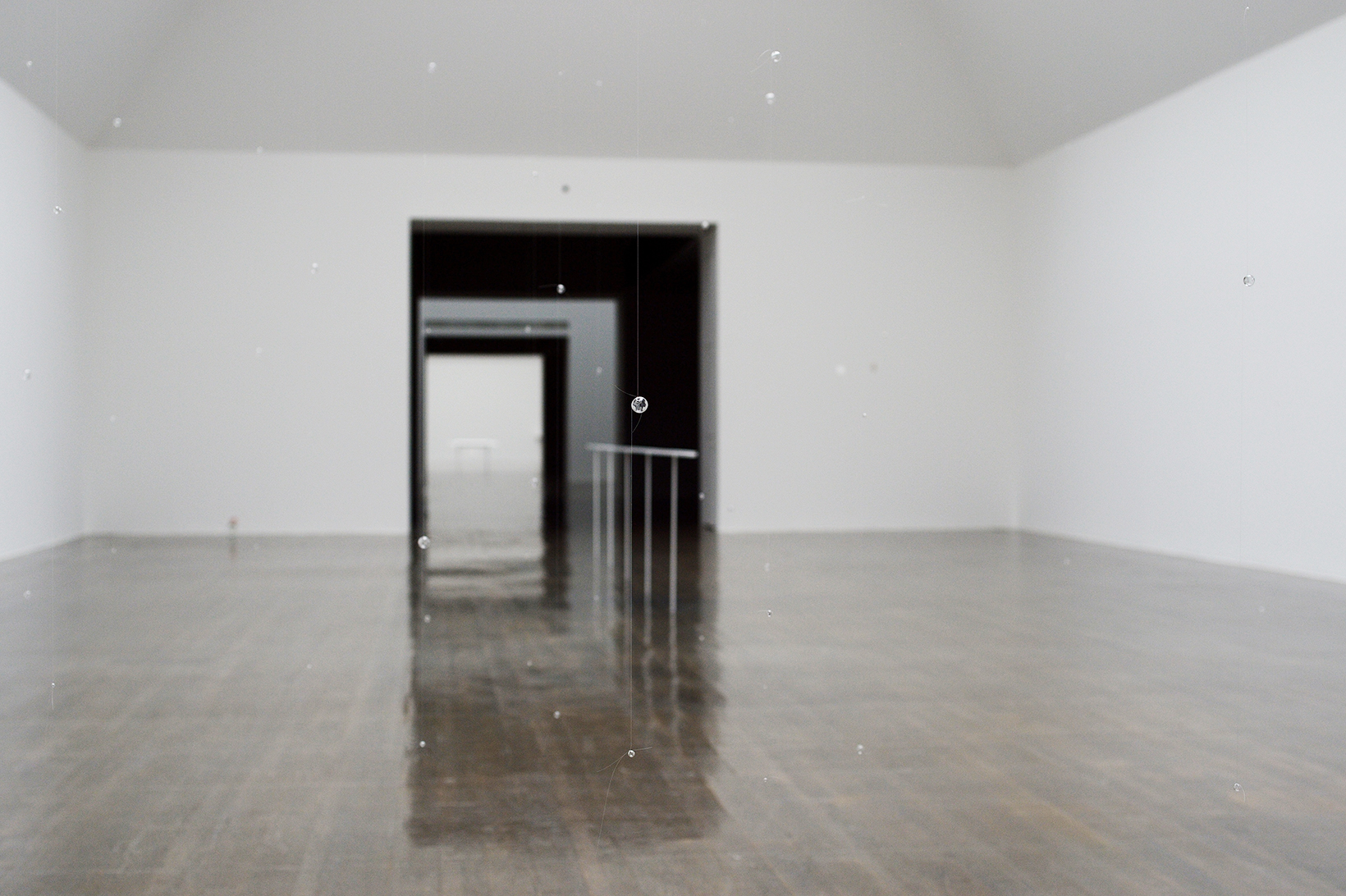Shows
Rei Naito’s “On This Bright Earth I See You”


Rei Naito’s “On This Bright Earth I See You” at Tokyo's Art Tower Mito was the artist’s largest show to date. Arranged with delicate minimalism, it presented 60 displays of mostly new works, among them sculptures, paintings, and installations. Progressing up and back around the long corridor of eight distinct but interconnected spaces, one could interpret the presentation in multiple ways—as, for example, the sparse aftermath of a cultish party, or a scattering of tiny shrines. The influences of animism are strong in Naito’s work, which for roughly three decades has explored perceptions of spiritual presences and invisible forces guiding cycles of life.
Throughout this menagerie of an exhibition, Naito alluded to what the show’s website callssei no uchi and sei no soto (“inside and outside of life,” respectively). While the former encompassed the world of living humans, the latter comprised the deceased and people not yet born, as well as flora, fauna and other entities with which the living cannot communicate. The first five of the eight spaces were designated as sei no uchi, the corridor wrapping around them as sei no soto, and the two final rooms at the end of hall as a blend of this life and the beyond, emphasizing the ways in which Naito’s work is centered on the porousness of the boundaries between these two spheres.
The first space put the viewer face-to-face with Untitled (Matrix) (2018), a curtain of string hung with two tiny bells and dozens of clear glass beads. Just past it was Tama/Anima (Please Breathe Life into Me) (2005), featuring a long tray cradling a pool of water, which museum staff encouraged visitors to blow upon to create spine-like ripples. “Matrix” is also the English title of Naito’s most famous works, Bokei (2010), a white dome on Teshima Island. This womb-like environment streams in light from ceiling openings while droplets of water seep up from the ground. Bokei translates to “maternal form,” and curator Yu Iseki explained at a public talk on August 25 that like Bokei, Untitled (Matrix) was meant to symbolize the maternal body as the gateway to life. Iseki noted that the strings of Untitled (Matrix) could be walked through, simulating a path of birth and entry into the world, after which we reenact our first breath with Tama/Anima (Please Breathe Life into Me).
Sei no uchi spaces also included Balloon (2018), a set of four drooping white inflatables attached to corners that Iseki construed as references to the Japanese festival ritual of kazaritsuke, or decorating to provide humans joy and lure spirits to our world. Meanwhile, establishing the notion of light as being central to the domain of the living, another sei no uchi space presented “Color Beginning” (2016–18), a series of white canvases with acrylic, raindrop-like splashes of light blues, pinks, and greens that are visible only in natural light. Among the works on the sei no soto side were four glass panes titled Window (2018). Although only the walls to which they are affixed are visible through them, they nonetheless imply that both sides of life have outlooks onto each other. Perched on the window frames are person-shaped wooden carvings Human (2012–17); no taller than a few centimeters, these pokerfaced figurines gazed at visitors like watchful spirits.
The most interesting work of the two hybrid spaces was Grace (2009), a stack of circular white papers free for the taking. Iseki explained that their diameter was 78 millimeters, the size needed for a human baby to pass through the birth canal. Printed on each slip is the phrase oide, “come here.” Like with Untitled (Matrix), this work is a proclamation of life, an incantation to it in our world while recognizing its interconnection with realms beyond it.
Without background knowledge, such as the interpretations provided at a curator’s talk, it can be difficult the grasp the full nuance of Naito’s work, which is often where its beauty lies. Yet this ambiguity could be seen as another expression of her philosophy––that life’s many amorphous meanings are not meant to be deciphered, but intuited.
Rei Naito’s “On This Bright Earth I See You” is on view at Art Tower Mito, Tokyo, until October 8, 2018.







